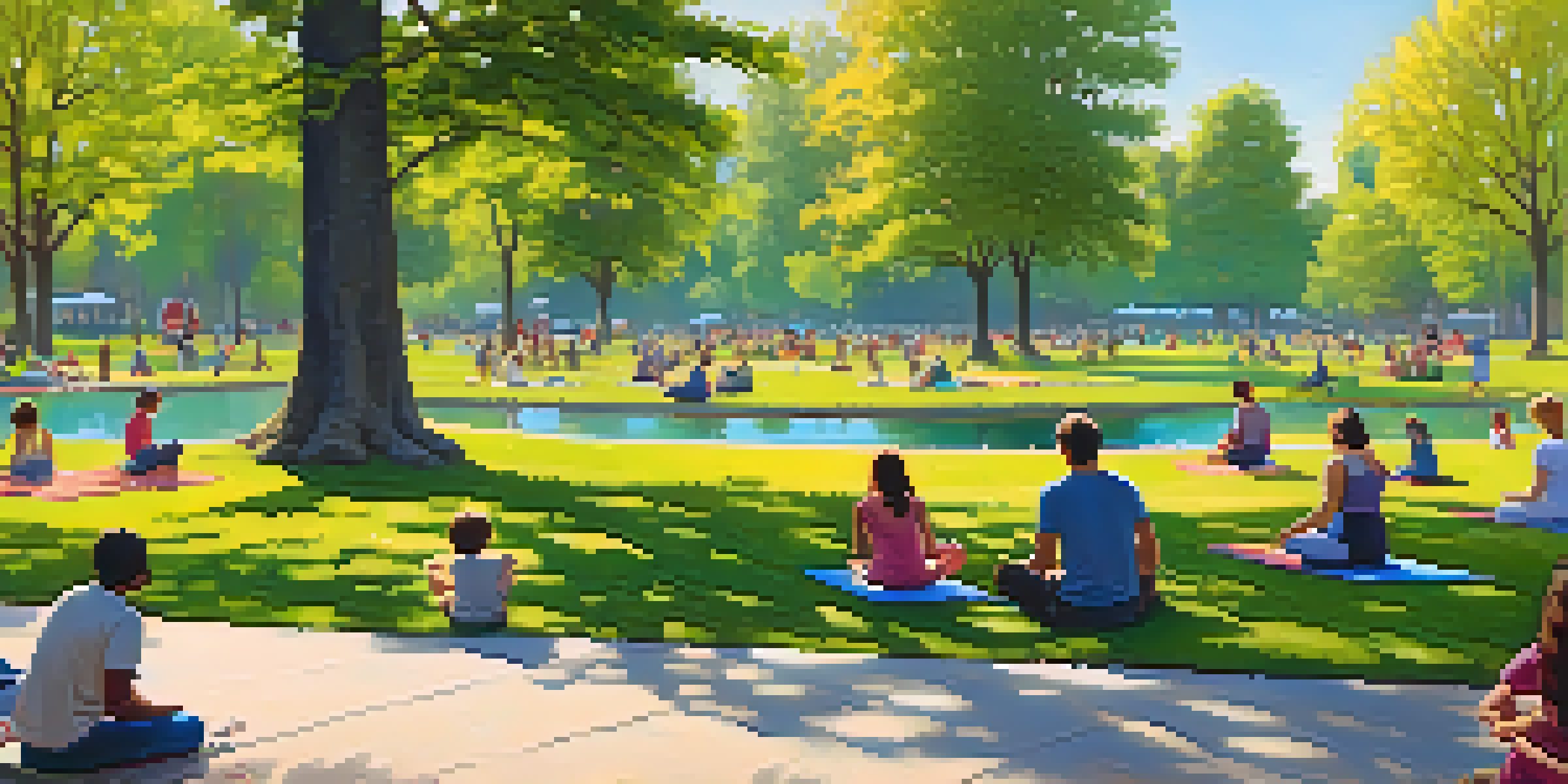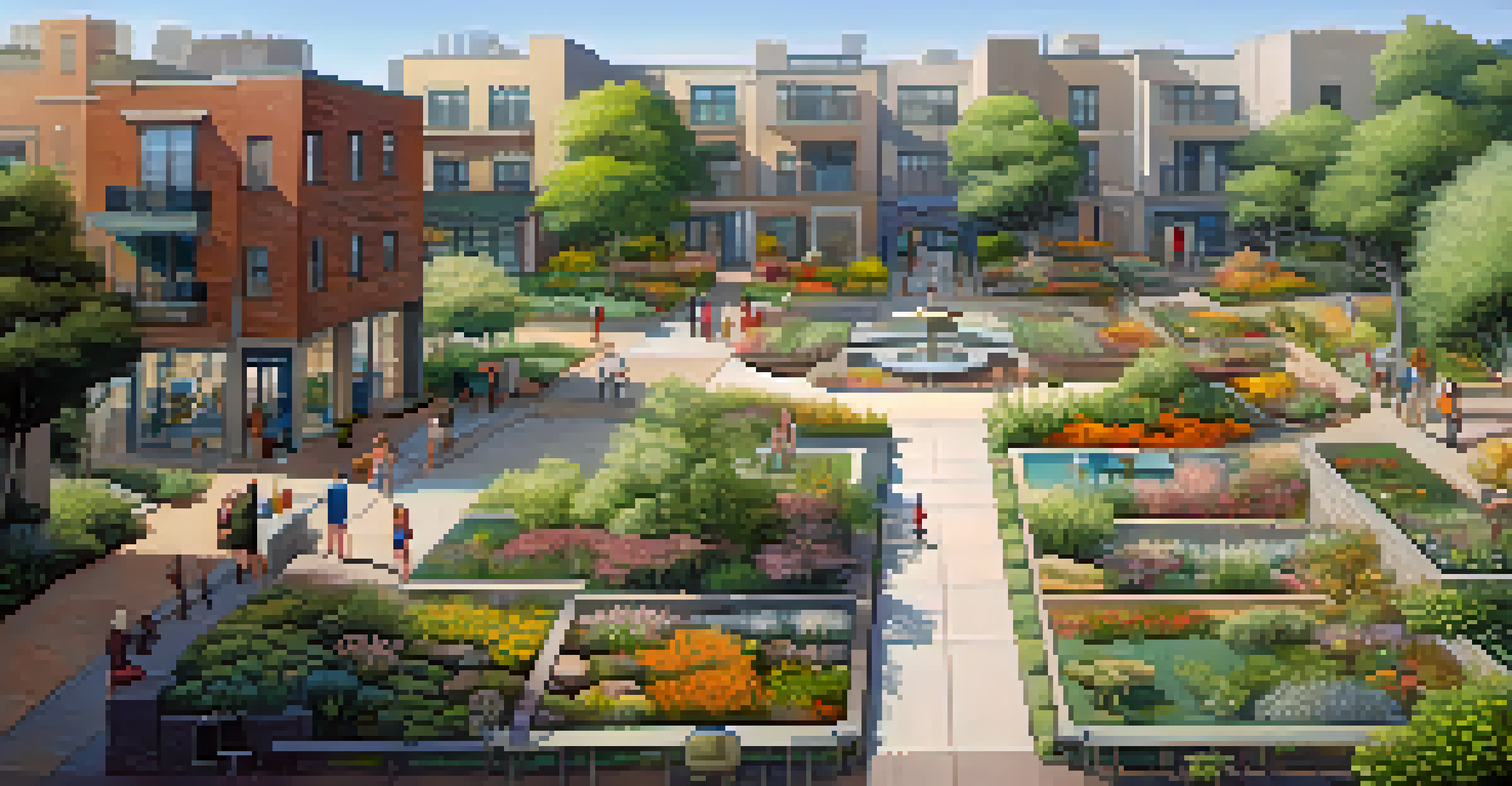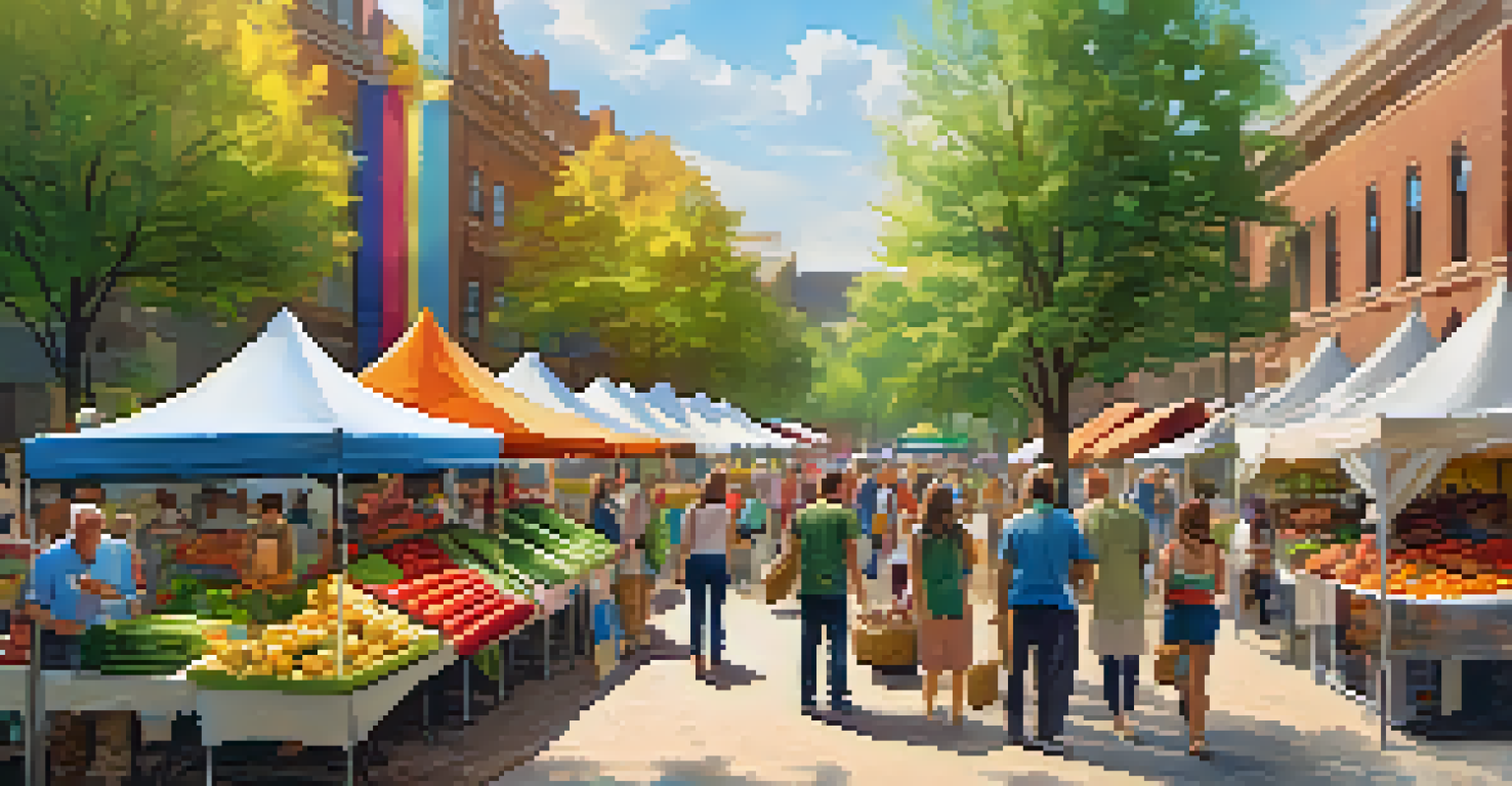Urban Green Spaces: Enhancing Tourism Sustainably

The Importance of Urban Green Spaces in Cities
Urban green spaces, like parks and gardens, play a vital role in city life. They provide not only a breath of fresh air but also serve as communal gathering spots that foster social interactions. Think of a park as the city's living room, where people come together to relax, play, and connect with nature.
Parks are not just a place to relax; they are the lungs of the city, providing us with fresh air and a connection to nature.
Moreover, these green areas contribute significantly to the ecosystem by supporting biodiversity. They are home to various species of plants and animals, creating a mini-ecosystem in the heart of bustling urban environments. This biodiversity is crucial for maintaining ecological balance and can enhance the overall quality of life for residents and visitors alike.
Finally, urban green spaces can improve mental well-being by providing a serene escape from the chaos of city life. Studies have shown that spending time in nature can reduce stress and anxiety, making these spaces essential for both locals and tourists looking for a peaceful retreat amidst the urban hustle.
Connecting Urban Green Spaces to Tourism
Tourism thrives on unique experiences, and urban green spaces offer just that. They create opportunities for various activities, from leisurely walks to outdoor yoga classes, attracting visitors looking to immerse themselves in local culture. For example, a city park hosting a weekend farmers' market can draw in tourists eager to experience local produce and artisanal goods.

Additionally, green spaces often serve as venues for cultural events and festivals, further enhancing their appeal. Imagine a music festival set against the backdrop of a lush park; it not only attracts tourists but also fosters community spirit. Such events can lead to increased foot traffic and economic benefits for local businesses.
Urban Green Spaces Enhance Life
Parks and gardens provide essential social, ecological, and mental health benefits in urban environments.
By promoting urban green spaces as tourist attractions, cities can encourage sustainable tourism. This approach helps protect the environment while providing a unique selling point that can set a destination apart from others. It's a win-win for both visitors and the community.
Sustainable Practices for Maintaining Green Spaces
Sustainability is key when it comes to maintaining urban green spaces. Cities can implement practices such as organic gardening and native plant landscaping to minimize environmental impact and conserve resources. For instance, using native plants not only supports local wildlife but also requires less water, making it a practical choice for city landscaping.
In every walk with nature one receives far more than he seeks.
Another sustainable practice is the use of rain gardens and permeable pavements, which help manage stormwater runoff. These features reduce flooding and improve water quality, creating healthier environments for both residents and visitors. They also turn green spaces into multifunctional areas that benefit the community.
Engaging the community in the maintenance of these spaces is also crucial. Volunteer programs and educational workshops can empower locals to take part in preserving their environment. This not only fosters a sense of ownership but also ensures that green spaces remain vibrant and welcoming for everyone.
The Role of Local Governments in Promoting Green Tourism
Local governments play a pivotal role in the promotion and maintenance of urban green spaces. By allocating funds for parks and green initiatives, they can enhance the attractiveness of their cities to tourists. For example, investing in new park facilities or improving existing ones can create inviting spaces that draw visitors.
Furthermore, governments can collaborate with local businesses and organizations to host events in these green spaces. Such partnerships can create a vibrant tourism scene that showcases the city's unique character while supporting the local economy. It’s about creating a synergy that benefits everyone involved.
Tourism Thrives on Green Experiences
Unique activities in urban green spaces attract tourists, fostering community spirit and supporting local economies.
Lastly, local governments can promote awareness of these spaces through marketing campaigns. Highlighting the beauty and activities available in urban parks can attract tourists who might not have otherwise considered visiting. It's all about putting these green gems on the map!
Challenges Facing Urban Green Spaces and Tourism
Despite their benefits, urban green spaces face several challenges that can impact tourism. One major issue is funding; maintaining and improving these areas often requires significant financial resources. Cities may struggle to balance budgets while investing in essential services and infrastructure, leading to underfunded parks.
Another challenge is the threat of urban development encroaching on green spaces. As cities grow, there is a temptation to replace parks with new buildings or commercial developments. This can diminish the quality of life for residents and reduce the appeal for tourists seeking natural attractions.
Lastly, managing visitor numbers can be tricky, especially in popular green spaces. Overcrowding can lead to wear and tear, detracting from the experience for both locals and tourists. Finding that balance between accessibility and preservation is crucial for the sustainability of these urban oases.
Case Studies: Successful Green Space Initiatives
Looking at successful case studies can provide valuable insights into enhancing urban green spaces and tourism. One example is New York City’s High Line, a linear park built on a former elevated railway. It has transformed an underutilized space into a vibrant park that attracts millions of visitors each year, showcasing the potential of repurposing urban areas.
Another noteworthy initiative is Singapore’s Gardens by the Bay, which integrates cutting-edge technology with nature. This stunning space features futuristic structures alongside lush gardens, drawing tourists from around the world while promoting sustainability. Such examples highlight how innovative thinking can elevate urban spaces into major tourist attractions.
Sustainability is Key for Maintenance
Implementing sustainable practices and engaging the community are crucial for preserving the vitality of urban green spaces.
These case studies demonstrate that with the right vision and investment, urban green spaces can thrive and enhance tourism sustainably. They serve as blueprints for other cities looking to harness the potential of their green areas while providing enjoyable experiences for visitors.
The Future of Urban Green Spaces and Tourism
As cities continue to evolve, the future of urban green spaces and tourism looks promising yet challenging. With increased awareness of environmental issues, there’s a growing demand for sustainable travel options. Tourists are seeking destinations that prioritize nature, creating an opportunity for cities to market their green spaces effectively.
Moreover, advancements in technology can aid in the management and promotion of urban green spaces. Apps that provide information on local parks and events can enhance the visitor experience, making it easier for tourists to explore these areas. This integration of technology can bridge the gap between urban life and nature.

Ultimately, the collaboration between local governments, communities, and tourists will shape the future of urban green spaces. By prioritizing sustainability and innovative practices, cities can ensure that their green spaces flourish as essential elements of urban tourism, inviting everyone to enjoy their benefits.